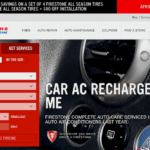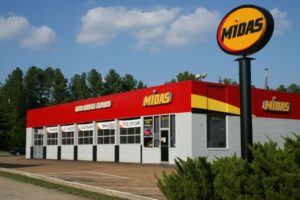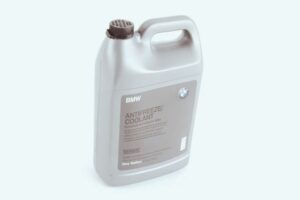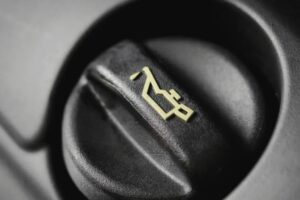No driver wishes for their vehicle to overheat. To prevent that from happening, you must ensure that your car’s overflow tank is always in good condition. How much coolant should be in the overflow tank?
Your vehicle’s overflow tank should only be at least 30% full. Typically, there are the minimum and maximum markers indicated on the tank’s exterior. In this case, the coolant should only be slightly higher than the minimum marker.
Read on to learn more about how full the coolant overflow tank should be, why it shouldn’t be filled at maximum level, and more.
How Much Coolant Should Be in the Overflow Tank?
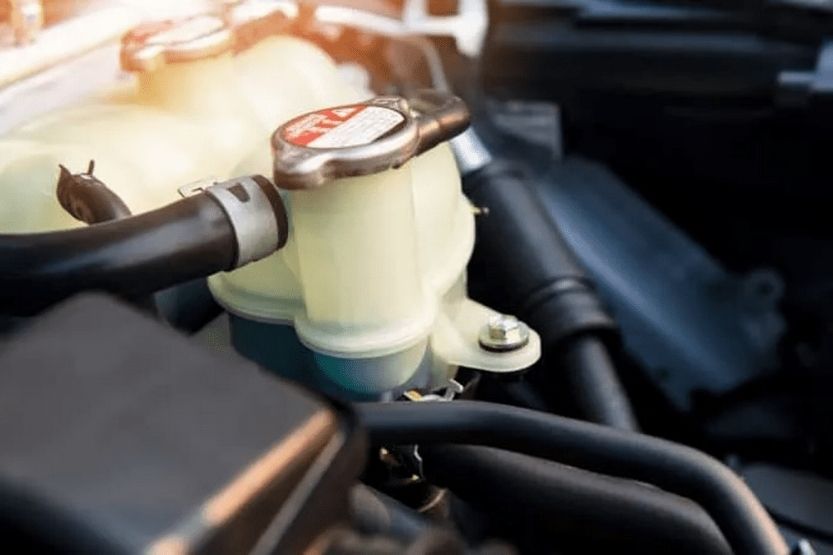
Your car’s overflow tank, or the coolant reservoir, should only be at least 30% full. Typically, the tank has minimum and maximum markers. In this case, the coolant should only be at least a little higher than the minimum level.
All drivers must know how full should the coolant overflow tank be. It’s easy to identify whether the coolant is low or high by merely looking at the body of the overflow tank.
The tank’s exterior usually has two marked lines with letters L and F indicated on it, wherein L means Low, and F means Full. If the coolant is below or slightly higher than the L line, it means your tank is still doing good. Anything more than that means that there’s already an immediate need to flush out some of the tank’s content.
Basically, the coolant must only be between the L and F lines and should not exceed that.
Do You Need the Subaru Super Coolant?
How Coolant Works
The coolant overflow tank plays a big role in your vehicle. If the overflow tank is in bad condition, your vehicle’s engine will most likely encounter serious damage.
To produce power and start your vehicle, the engine has to burn fuel first. As your car runs, the engine continuously generates a generous amount of heat. If more than enough heat is being produced, it can result in cracked cylinders and a blown-up engine head gasket. Obviously, this occurrence is not at all a minor car issue.
Why Coolant in the Overflow Tank Is Important
Vehicles are built in such a way that they are fitted with a cooling system. This system extracts heat and makes sure that the engine maintains its temperature requirement. It then circulates coolant to the engine.
The heat extracted from the engine converts into gas and goes to the radiator. From the radiator, the gas converts into liquid. In essence, the radiator eliminates the extracted heat outside the car.
As your car continues to run, the engine’s temperature rises too. While this happens, the radiation cap expands so that it can release pressure. This allows the coolant to escape and drip down to the overflow tank.
The coolant stays in the tank until the engine cools down. Also, if the engine needs more coolant to continue heat circulation, the additional coolant can come from the overflow tank.
Should I Use Coolant or Antifreeze?
Symptoms of a Bad Coolant Overflow Tank
So, how would you know if your vehicle has a bad coolant overflow tank? Here are several signs to look out for:
- Coolant Leak
- Overheated Engine
- Coolant Odor
- Extremely Low Coolant Level
1. Coolant Leak
Overflow tanks wear out over time. If it already has a crack or damage, the coolant fluid will absolutely leak out of it. You would know that the coolant is leaking once you notice puddles or drops of coolant on the driveway, the garage floor, or the parking ground.
Always remember that coolant is toxic. So, it’s better to clean your garage or driveway immediately once you notice a coolant leak on the ground. The last thing you’d want to happen is for your pets to ingest engine coolant.
2. Overheated Engine
As the term implies, the job of the coolant is to cool an overworked engine. If there’s a leak, there won’t be sufficient coolant circulating through the engine. This means that the engine will not cool down.
If this happens, the engine’s temperature will continue to rise. This will eventually result in an overheated engine. The engine temperature gauge on your car’s dashboard will alert you if your engine is already overheating.
3. Coolant Odor
Aside from a coolant leak and an overheated engine, you will also notice an odd odor coming from the front of your car. If your overflow tank is damaged, there’s a possibility that what you can smell is the coolant.
The odor isn’t so bad at all. In fact, the coolant has a slightly sweet smell. But then, it’s not normal to smell something like that coming out of your car. So, it should come as a warning sign that will prompt you to check the condition of your car’s overflow tank immediately.
4. Extremely Low Coolant Level
By now, you already know how much coolant should be maintained in the overflow tank. While it should remain low at all times, an extremely low coolant level should not be ignored. It could mean that the tank is damaged and the coolant is leaking.
If you don’t notice any trace of a coolant leak on the ground, check the overflow tank cap. It’s possible that it isn’t tightly closed, and the coolant escapes through it.
What Causes a Coolant Overflow Tank to Overflow?
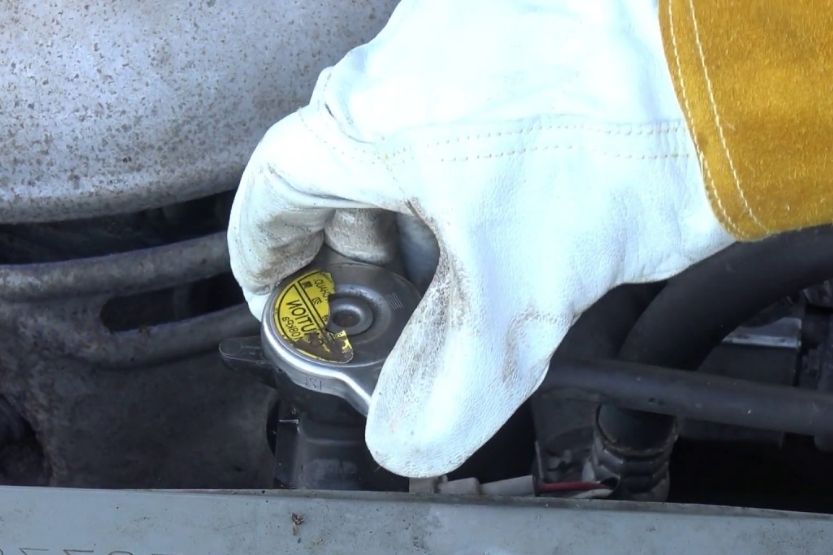
There are several reasons why a vehicle’s coolant reservoir overflows. In most cases, it may be due to issues involving the following:
- Coolant Level
- Radiator Cap
- Water Pump
- Thermostat
- Cracked Head or Block
- Radiator
Let’s briefly discuss these factors:
1. Coolant Level
Ensure that there’s a correct amount of coolant stored in your car. If there’s too much coolant in it, the chances are that it will cause the tank to overflow.
2. Radiator Cap
If the radiator cap is damaged or loose, the coolant will most likely not stay where it is supposed to be. So, if it is loose, make sure to tighten it to prevent the coolant from escaping.
In case of damage, you can easily have it replaced. However, you have to make sure that you will get the correct cap for your radiator. The radiator cap comes in various pressures. It is best to check the Owner’s Manual to confirm the exact cap to buy.
The job of the radiation cap is to enable access to fluids in a “closed” system. There is a specific amount of coolant required to allow the engine to function well. This is why the coolant must be kept at a specific pressure at all times.
3. Water Pump
If your vehicle’s water pump is faulty, it slows down or stops the flow of fluid entering the cooling system. This will cause the engine to overheat.
Such an occurrence will cause the coolant fluid to leak on the ground. It will also leak around the water pump.
4. Thermostat
Engine issues will most likely cause your car’s Check Engine Light to turn on. However, there are instances wherein accurate information is not delivered to the vehicle’s main computer. Unfortunately, the Check Engine Light might not turn on if this happens and fail to alert you of the problem.
A faulty thermostat can inefficiently regulate fluid. It can then result in an overflow.
5. Cracked Head or Block
Check your vehicle’s radiator and see if there are gas bubbles or the liquid seems to be somewhat boiling. In which case, there probably is a cracked cylinder head or engine block.
However, before you remove the radiator cap, make sure that the engine is not hot. Doing so might cause a shot of boiling water to explode under pressure.
Better yet, bring your vehicle to your trusted repair shop. Let them do the test to identify cracks on the cylinder head or engine block.
6. Radiator
If you don’t see any water pump, cap, or thermostat issues, the problem might be with the radiator. This is especially true if the radiator contains plastic.
Modern vehicles typically feature lightweight plastic radiators. The problem with these is that they wear faster than those made of copper and aluminum.
If a leak is found, it is best to replace the radiator rather than apply a patch on the affected area.
Again, how much coolant should be in the overflow tank? A reservoir tank should at least be 30% full. Use the tank’s minimum and maximum mark as a guide. Coolant leaks happen if the car has a bad radiator cap and/or fans and loose radiator hose clamps.
Frequently Asked Questions
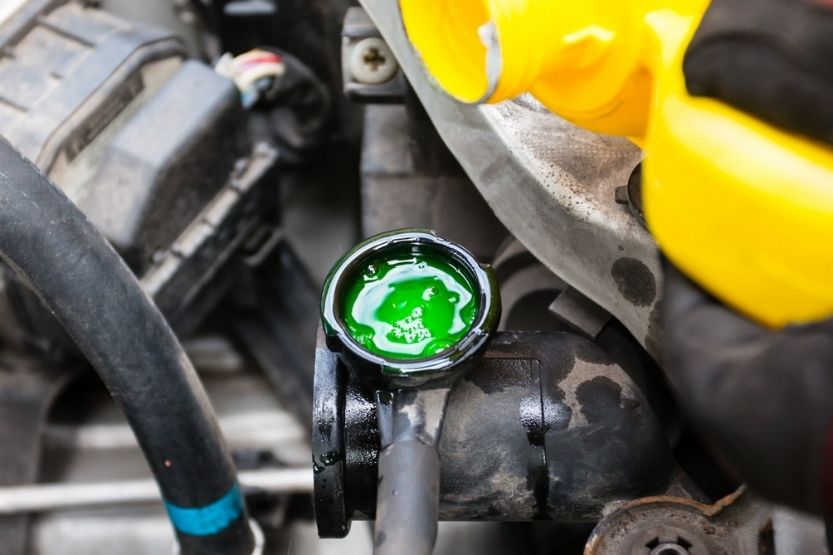
What Happens If Coolant Is above Maximum?
If the coolant is above the maximum, it will tend to overflow and escape from the tank. You will most likely notice a puddle or drops of coolant beneath your vehicle. Worse, it can result in electrical damage if it gets into contact with engine wiring.
Coolant expands when it is hot and contracts as it cools. The extra space in the tank prevents damage to the engine and hoses.
What Happens If the Coolant Overflow Tank Is Empty?
If the coolant overflow tank is empty, you can’t simply refill it. You first have to check the level of coolant stored in the radiator:
- To check the coolant in your car’s radiator, you must first make sure that the radiator has already cooled down. Opening a hot radiator can result in serious burns.
- When you remove the radiator cap, avoid pressing down on it. Doing so might release built-up pressure. Gently turn the cap counterclockwise.
- Once you have removed the cap, you can start checking the coolant level in the radiator. Remember that it should not be lower than the bottom of the radiator neck. If it is, you can add fresh coolant to it. Make sure to add the right amount only.
- Put back the radiator cap and make sure that you properly close it.
- You can also add a small amount of coolant to the tank. However, you have to make sure that it will not cause an overflow once the engine starts running.
But what if both the radiator and the overflow tank have an extremely low coolant level? There might be a leak somewhere. In which case, you have to bring your vehicle to a car care shop to address the problem.
How Long Can My Car Run Without Coolant?
The coolant is primarily responsible for controlling the engine’s heat. If you force your car to run without coolant, it will permanently damage the engine. You will most likely see smoke coming from the hood of your car as you continue to drive.
Your car can probably run without coolant for about five minutes. However, it’s not a good idea at all to drive a car without coolant. It will definitely cause huge damage to your vehicle. Worse, it can even lead to an accident.
How Often Do I Need to Change Coolant?
How often you need to change coolant depends on two major factors. First, it depends on the type of coolant that you use. Second, it depends on the type of vehicle that you drive.
For older vehicle models, it was recommended that coolant should be replaced every two years or so. However, coolant formulas have been enhanced over the years. They are guaranteed to last longer now.
As for newer vehicle models, coolant can typically be changed every 5 to 10 years. Again, it depends on the type of vehicle and the type of coolant to be used. Typically, it is ideal to have it changed every 200,000 miles or so.
Conclusion – How Much Coolant Should Be in the Overflow Tank?
Your car’s overflow tank, or the coolant reservoir, should be at least 30 percent full only. The tank has minimum and maximum markers indicated on its exterior. In this case, the coolant should only be at least slightly higher than the minimum level.
Generally speaking, the coolant overflow tank can’t either be empty or full. Both scenarios can lead to serious damage to your car. So, it’s best always to make sure that the overflow tank has an adequate amount of coolant in it.
If you encounter any coolant leak, coolant odor, or overheating problems, your car may be experiencing issues with its overflow tank. To confirm this, the best approach is to visit your trusted car care shop. Let them check it for you and address the issue immediately.
Read next:
Causes and Solutions to Coolant in Oil

![Oil in Coolant [Causes and Solutions to Coolant in Oil] oil in coolant](https://roadsumo.com/wp-content/uploads/2021/10/oil-in-coolant-150x150.jpg)
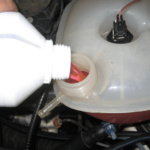
![Toyota Long Life Coolant and Super Long Life Coolant [Review] toyota long life coolant](https://roadsumo.com/wp-content/uploads/2021/07/toyota-long-life-coolant-150x150.jpg)
